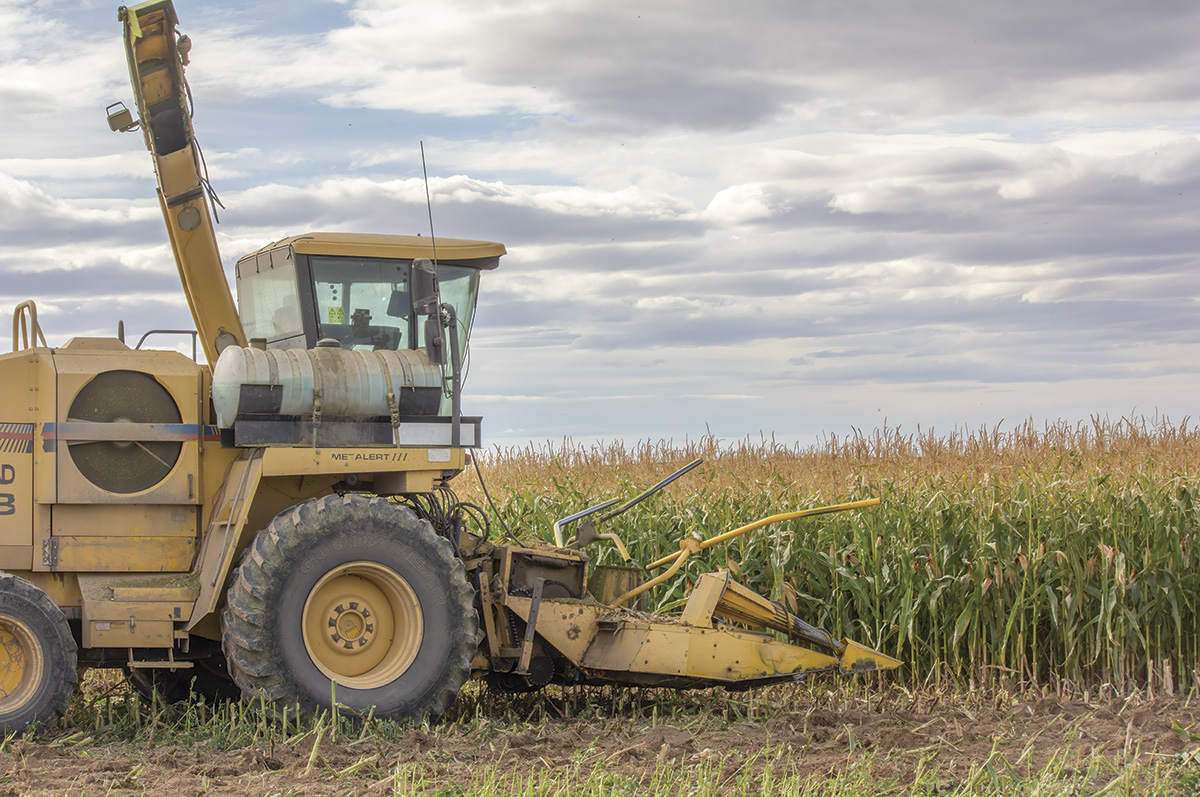High-moisture corn (HMC) is an important feedstuff utilized in many ruminant operations. It is typically harvested at between 24% and 32% moisture and provides many benefits such as early harvest, no drying cost and an increase in digestibility when compared to typical non-processed, dried ear corn. During fermentation in the ensiling process, the starch-protein matrix in the granule undergoes changes, facilitating enhanced digestibility. This transformation grants rumen microorganisms easier access to break down the starch. Nonetheless, while HMC offers these benefits, it comes with a significant cost and is susceptible to aerobic deterioration and spoilage if not handled properly.
Critical control points
Producers who utilize HMC have a substantial economic investment in their pile or silo full of corn and, ideally, they’d like to get a return on that investment. There are several important factors to consider when preserving HMC. Some of the most important management factors are dry matter of the corn, kernel processing, packing, pile sealing and utilization of an effective inoculant.
Dry matter and maturity of corn typically go hand in hand; the recommended moisture is between 24% and 32%. Kernel processing is another important management factor to get the most out of your corn. Generally, a hammer mill or roller will accomplish the goal of improving the digestibility of your corn.
To ensure effective packing, it’s crucial to adhere to the “rule of 800.” To apply this formula, simply divide the weight of your packing tractor by 800. This calculation provides a reliable estimate of the maximum corn delivery to a pile per hour. Employing this method guarantees thorough packing, maximizing oxygen removal during the process.
The typical recommendation for pile sealing is to utilize a high-quality, thick plastic that is weighted down by tire sidewalls, touching throughout the cover of the pile. For a high-investment crop like HMC, it is a good idea to use an additional oxygen barrier film to ensure oxygen prevention. These management practices can have a significant impact on the preservation and quality of your HMC.

Staff photo.
Science-based, research-proven inoculant
A science-based, research-proven inoculant can make good HMC better, but it cannot make HMC good when the management practices discussed above aren’t implemented. As mentioned earlier, the cost associated with HMC is significant, so it’s important to evaluate the research directly associated with the inoculant you are considering. For high-moisture corn, a good inoculant is a microbial additive designed to enhance swift fermentation and deter the proliferation of detrimental microorganisms, while also being stable and convenient to apply for consistent preservation of HMC quality and nutrient content.
Aerobic stability is defined as the number of hours your crop will maintain ambient temperature before increasing more than 3ºC (about 5.4ºF). This phenomenon occurs when the crop is exposed to air and begins to heat as the growth of yeasts and molds flourishes. This heating is going to result in a loss of dry matter, spoilage, lower nutritive values, potential mycotoxin production and, if left unmanaged, it will result in reduced animal performance. Aerobic stability is crucial for getting the most nutrients out of your HMC and into your animals.
A study done at the University of Florida evaluated the use of an inoculant with Lactobacillus buchneri LB1819 and Lactococcus lactis O224 versus a control with no inoculant applied. They showed significant beneficial differences between the two experimental groups. The science-based, research-proven inoculant with a combination of L. buchneri LB1819 and Lactococcus lactis O224 reduced the mold count and exhibited a higher amount of soluble crude protein (CP), in situ starch degradation and the greatest hours of aerobic stability. The inoculated HMC not only had a greater number of hours of aerobic stability, but it had nearly 180 more hours of aerobic stability when compared to the control. Although a producer will typically not need 180 hours to feed HMC that is at the face of the pile, these results are important because oxygen can penetrate 3 feet or more into a pile. With 180 hours more aerobic stability, you can be assured that the HMC should remain cool and fresh during feedout.
Getting the most out of your investment
In summary, when investing time and effort into harvesting and preserving HMC, it’s crucial to evaluate all your management options to achieve the greatest success.
I once met a farmer who told me, “Every day is a gamble in agriculture.” Well, if we were to follow that adage, I would say that using a science-based, research-proven inoculant is like walking into the casino and choosing the game with the best odds. I can’t guarantee you will have the results you expect, but I can tell you that you are giving yourself a better chance of success.









